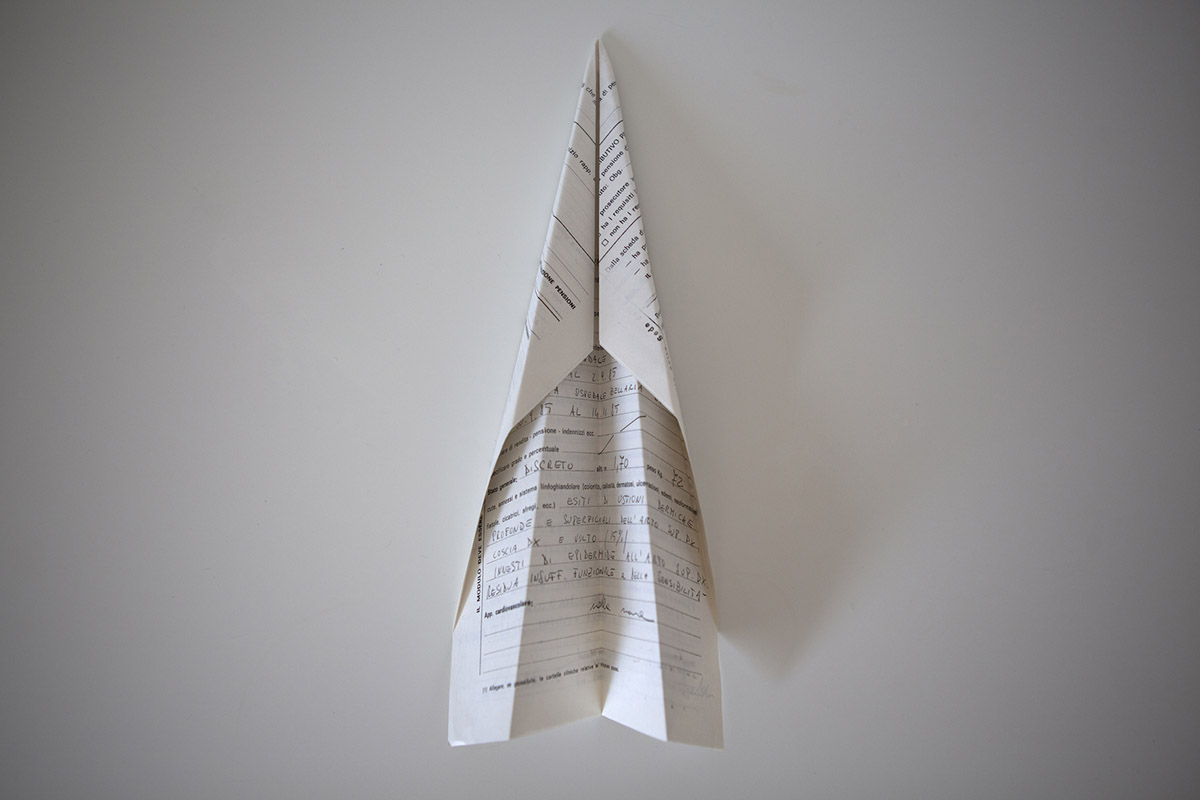by Chiara Ruberti
_
For the past seven years, Fotografia Europea (Reggio Emilia) has been hosting Giovane Fotografia Italiana [Young Italian Photography], a project curated by Daniele De Luigi, dedicated to finding and showcasing the best emerging talents in Italian contemporary photography. Every year, through an open call, Italian artists under 35 who use photography are invited to deal with a theme, in line with the main theme of FE.
I found the declination that the two curators, Daniele De Luigi and Ilaria Campioli proposed this year as the main theme of FE very intelligent: “Ropes / Corde”. The need to underline the tension between the value of memory and the possibilities of the future, in a historical moment in which the importance of roots and relationships is constantly being devalued and questioned, is obviously urgent.
Most of the works proposed have a strong personal matrix, but the overall narrative leads the visitor to a wide-ranging reflection, which from the intimate stories of Camerini and Bigi, through the Fellini province of Pasqui, arrives at the poetry of the landscape of Valentini.
Next weekend, 8-9 June, is the last available to visit Fotografia Europea and the exhibition of the winners of Giovane Fotografia Italiana.
A short interview with the curators of the exhibition, Daniele De Luigi and Ilaria Campioli, helps us to better understand the intentions and objectives of the project.

GFI has reached its seventh edition this year. A valuable project for Italian photography, which decides to focus and work on the new generations, giving the selected young artists an important recognition and an opportunity for production and visibility in a context of great importance, national but also international, such as that of FE. How have the project, the participation to the open call and the public and critical response changed over the years?
If I think back to the first edition of GFI, I realize how much this project, born from a collaboration between the Municipality of Reggio Emilia and GAI, has grown year after year. In 2012 I was on my own when I selected 12 authors, among the very few participants, who had the opportunity to see their photographs projected in the square to accompany a DJ set. Little by little we have set up an international jury thanks to partnerships with important European festivals (today they are Circulation(s) in Paris, the Brighton Biennale and Panoramic in Barcelona) where the selected works are shown in a slide show to thousands of people, we have transformed the format into an exhibition for which we assign to each of the participants a fee for the production, we have established a cash prize for one of the seven finalists assigned by a quality jury. Submissions are always around 150, the level of the selection has grown a lot and the acknowledgments from the public, the professionals and the artists themselves who thank us for the Reggio Emilia experience are a satisfaction and an incentive to continue on this path.
This year the exhibition of the selected artists was hosted in the beautiful space of the Cloisters of San Domenico, a space that enhanced the installation and transmedia aspect of some of the projects. The “plurality of expressive media” was one of the aspects that seems to have also determined the choice of the international jury of Iacopo Pasqui as the winner of the Young Italian Photography Award.
The exhibition rooms of the San Domenico Cloister are one of the most evocative spaces in the city. It is no coincidence that the internal courtyard they overlook was chosen in 2005 by Robert Morris for the installation of the sculpture Less Than. This space has allowed us to give the right importance to each project by highlighting its peculiarities and, in some cases, encouraging dialogue. Surely the increasingly frequent use of different expressive media and the contamination between them is an aspect that is becoming preponderant, together with the increasingly “installative” character of the productions. We believe that the hybridization between the different vision devices will be the dominant element in the coming years. This aspect reflects, in part, the complexities of the contemporary image as it was underlined by the jury in the awarding of the Young Italian Photography Award to Iacopo Pasqui’s project. The use of photographs and videos has expanded the yield, in a way, managing to “render the conflict between the individual and the social body in a state of homologation and isolation” of the Italian province.

I can’t ask you what your favourite works are, unfortunately! But I can ask you what is the peculiarity that struck you and convinced you most of each work?
Of Luca Marianaccio, in addition to some very strong single images, the ability to relate them, creating a disturbing and very vigorous visual whole. Emanuele Camerini’s use of the image as an element to trigger memory and recollection within a deeply intimate story in search of a new vision of the present. Marta Giaccone’s delicate gaze and the immediacy of the shot aimed at the young inhabitants of the “Island of Arturo”. Of Fabrizio Albertini the contrast between a very direct, almost caustic style, and the delicacy of the inner world and the memory from which he draws. Silvia Bigi’s ability to conduct a rigorous research that involved her very much on a personal and family level, sublimating it in some works of great emotional impact. Jacopo Valentini’s reflection on the mechanisms of vision and perception, on the illusionary nature of images and on our continuous search for unique meanings in contrast with an open and evocative vision.

GIOVANE FOTOGRAFIA ITALIANA
ROPES/CORDE
curated by Daniele De Luigi and Ilaria Campioli
Chiostri di San Domenico
via Dante Alighieri, 11, Reggio Emilia
Sat-Sun: 10:00 am – 7:00 pm
June 7, 2019




